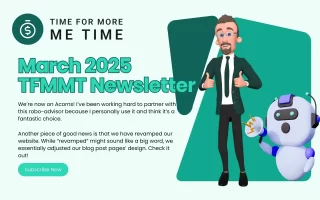Curious about how to start a blog and make money from it? It might seem overwhelming at first, but trust me—it’s more achievable than you think! Let’s cut through the noise and focus on what truly gets results.
Fortunately, you don’t need to be a tech wizard to create a stunning blog on your own. You also don’t need to spend a fortune to get it up and running. With the straightforward steps I’ll share, you can get started in no time.
In this post, I’ll provide you with a clear guide to launching your blog, preparing it for potential monetization, and making it more accessible to people on the internet. Let’s get started!
1. Determine Your Goal
The first step is to identify what you want to blog about. Next, prioritize your goals, and finally, decide how much time you’re willing to invest in it.
Do you want to take the classic route and share your daily life? Is your blog intended for monetization? Or is it a platform to showcase your business, services, or portfolio? Depending on your answers, the topic, design, and necessary actions for your blog will vary.
In my case, I’ve already outlined my goals months before I started this site. First, I aim to help people who, like me before, are struggling with poverty and financial challenges. Second, I want to assist them in finding more time for themselves, their families, and friends. Lastly, I hope to earn a bit of money to sustain the site for as long as possible.
So, what are your goals?
2. Decide On Your Niche
If you’re not just planning to blog about yourself or create a portfolio, the next step is to choose your niche. A niche refers to the specific topic or industry that you’ll focus on in your writing.
Defining your niche gives your blog direction and helps prevent you from posting random thoughts. While that approach can work for a personal blog, it’s less effective for a blog aimed at monetization or delivering a clear message.
So, how do you decide on your niche? A quick and effective way is to base it on your passions, interests, and skills. It’s always best to write about what you know and love, as people are drawn to content from those who are genuinely passionate about their subject.
3. Identify Your Target Audience
After choosing your niche, the next step is to narrow down your focus by determining your target audience. Who will you be writing for? Who do you want to reach with your blog?
You can identify your target audience by analyzing your niche. For example, my niche is finance and lifestyle, and I primarily aim to provide advice on how people can earn and save money.
To pinpoint my audience, I considered who struggles with financial issues. A quick Google search revealed that my target audience includes single moms, young men who didn’t attend college, and individuals burdened by debt.
With this information, I now have a clear understanding of my target audience, which helps me know what to write and talk about.
4. Analyze Trends
To effectively reach your target audience within your niche, it’s essential to understand what type of content is in demand. This requires analyzing trends and identifying the topics that people are searching for the most.
There are several ways to do this. You can monitor social media to see what your target audience is discussing. Tools like Google Trends can help you identify trending topics and popular searches on Google. For a more technical approach, you can use keyword research tools to discover exactly what people are typing into search engines.
By staying informed about trending topics, you increase your chances of appearing in Google search results, making it easier for people to find your blog amid the vast sea of websites on the internet. Additionally, you can address and help your audience with their primary concerns right away.
5. Assess Competition
While assessing your competition is critical at the beginning of your blogging journey, it can also help you identify what works and what doesn’t. This analysis allows you to understand trends and determine the type of content your target audience will want.
Take some time to read how others in the blogosphere or on specialized websites discuss your chosen theme. Consider how many competitors there are and the variety of content they produce, from detailed how-to guides and educational webinars to catchy Instagram stories. Pay attention to how engaged their audience is.
Aside from topics, evaluate their writing style and how they deliver content to their readership. Identify their weak spots and turn them into opportunities for your blog. If there are already many well-established blogs in your niche, it might take considerable effort to stand out. However, if there are only a few competitors or if the existing content is low-quality, that could be your chance to swoop in and fill the gap.
6. Select A Platform
At this point, you have a clear idea of what you want to include in your blog. Now is the perfect time to move forward and actually create it. The first step is to select a platform where you will establish your blog.
There are several options available. You can choose free blogging platforms that allow you to get started immediately upon signing up. Alternatively, you can take the technical route by getting a web host to manually install and set up your blog—this is what I did. Another option is to select a premium blogging platform that enables you to start quickly while offering a wealth of features and customization options.
Let’s dive into specifics. One of the best blogging platforms available is WordPress. It offers both free and premium versions, and you can even install it on a web host for greater flexibility. Most blogs you encounter are built on WordPress due to its versatility.
Another option is Blogger, a free blogging platform owned by Google. It’s simpler and allows you to get started right away if you already have a Google account. However, be aware that customization options, such as designing your site to match your vision, are quite limited.
Then there are web hosting platforms. These are essentially storage services that allow you to upload your blog files, making them accessible to users through their browsers. The top three popular web hosts are NameCheap, Hostinger, and DreamHost. Keep in mind that there are many hosting options available, so be sure to shop wisely.
Ultimately, the perfect blogging platform for you depends on your goals, the features you need, and your technical knowhow. Some may find WordPress to be the best fit, while others may prefer a simpler option. As long as the platform meets your needs, you really can’t go wrong.
7. Register A Domain Name
Once you sign up for a blogging platform or acquire a web host account and install your preferred blogging software, the next step is to register a domain name.
Typically, most blogging platforms and web hosts will prompt you to choose a domain name right away. A domain name is the address people will type into their browsers to access your site. For example, Google’s domain name is google.com.
If you choose a free blogging platform, you won’t have your own domain name; instead, you’ll receive a subdomain. For instance, with a free WordPress account, you can customize your subdomain name. If you choose “johnsmith,” your address will be johnsmith.wordpress.com. Essentially, your site will be hosted under the WordPress domain.
Generally, the cost of a domain name is around $10 per year for the first year, as most companies offer attractive discounts for new registrations. However, this price may increase depending on the perceived value of your domain name after the initial year and the discount wears off.
8. Design Your Blog
If you’ve followed all the steps above, you should now have an active blog or website. The next step is customization and design. Depending on the blogging platform and setup you chose, you have several options for designing your blog.
The most common method is through the built-in design menus provided by blogging platforms. These menus allow you to customize your design by changing fonts, layouts, and more. However, this option can be somewhat limited.
Another option is to choose a theme. Many blogging platforms offer pre-packaged themes that allow you to select a predefined template. You can then customize this template further using the design menus.
If you opted for a web host and are doing things manually, you can use built-in website builder apps. These tools provide an intuitive interface where you can drag and drop elements onto your website, much like designing a PowerPoint presentation.
For those who are more tech-savvy, you have the option to manually design your site through coding. This approach is typically left to web developers, but it offers the greatest flexibility and control over your blog’s design.
9. Start Posting
You’re all set! Your blog is ready, and you have a well-thought-out plan for your content. Now it’s time to start posting!
To build momentum, it’s essential to maintain a consistent posting schedule. Keep in mind that content is king. While there are countless tutorials on what to post and how to do it, the most effective way to attract readers is to stay true to your unique voice and write authentically. When you do this, everything else will naturally fall into place.
If you find that your initial efforts aren’t yielding the results you hoped for, it may be time to explore the technical aspects of blogging to enhance your strategy.
FAQs
If I haven’t covered everything you were hoping for in the previous sections, this FAQ section may provide the answers you need. Hopefully!
Do beginner bloggers make money?
The answer is a resounding no. Earning money through blogging requires consistent effort and active engagement on your part. A beginner may not see a single cent during their first year of blogging—that’s the reality.
Most bloggers who earn money with new blogs are either experienced or have a team working behind the scenes to ensure their content is optimized for monetization.
What are some mistakes beginner bloggers make?
Beginner bloggers often make several common mistakes that can hinder their success, including inconsistent posting, ignoring audience needs, and resorting to shady practices and services to boost their viewership.
Additionally, many new bloggers fail to invest time in building a community around their blog. Neglecting to engage with readers through comments, social media, or email newsletters can create a disconnect and limit audience loyalty.
Building relationships with your audience is crucial for fostering a supportive community that will return to your blog regularly and share your content with others. By prioritizing genuine engagement and ethical practices, beginner bloggers can create a more sustainable and successful blogging experience.
How long does it typically take for a new blog to start generating income?
The timeline for a new blog to start generating income can vary significantly based on several factors, including your niche, content quality, marketing efforts, and audience engagement.
Generally, it can take anywhere from six months to a few years for a blog to start generating substantial income. The key point is that this process requires a significant amount of hard work and a touch of luck. Depending on the effort you invest and the opportunities that arise, this timeline can vary considerably.
Conclusion
So there it is—the roadmap for starting a blog. These are essentially the steps I took to establish this blog myself. However, the main difference is that I aimed higher, took the more challenging and technical route, and invested in professional help to get things started.
You may not have the resources or motivation to follow my exact path, but the steps outlined in this post should be sufficient to kickstart your blogging journey.
If you found this information helpful, be sure to subscribe to my mailing list, follow my social media accounts, and check out my YouTube channel!






